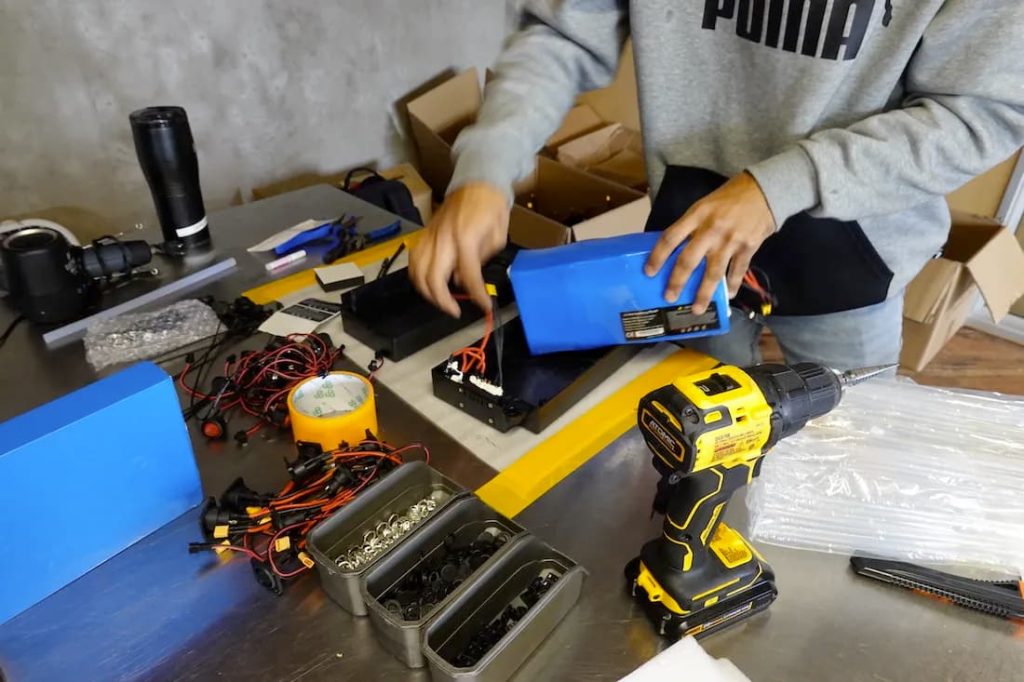
If you’ve been following the news on electric bicycle fires in the US, you’ll already know that New York City is widely seen as the epicenter, often catching headlines for battery fires. The city hosts more electric scooters and e-bikes than ever before, and yet this year is seeing a drastic drop in fatalities caused by battery fires.
So if there are more battery-powered mobility devices on NYC’s streets than ever before, why are the fire death figures heading in the opposite direction?

First of all, as we’ve often reported here on Electrek, the phenomenon of an electric bicycle fire, and especially fatalities from electric bicycle fires, are exceeding rare. They get plenty of news coverage because of the old “if it bleeds (or burns), it leads” adage. But the fact of the matter is that there are millions of e-bikes and e-scooters currently rolling around the US and battery fires are incredibly rare.
Even in New York City, which is home to more of these devices than anywhere else in the US, the city saw just 14 fatalities from dozens of e-bike fires in 2023. That isn’t to say the problem isn’t serious but rather to put things in perspective. New Yorkers are 3-5x more likely to die from choking or riding the subway than from a battery fire.
Despite that already low rate, 2024 has seen a major drop in e-bike fire fatalities. As of last month, just four deaths were recorded in battery fires, marking more than a 60% drop compared to 2023, according to the New York Times.

The biggest contributing factor to e-bike battery fires is the prevalence of low-quality batteries produced by ultra-budget manufacturers. These batteries can be attractive to consumers due to their significantly lower prices. Such cheap batteries are commonly used by delivery riders and other low-income workers who rely on their e-bikes for a living, but they come with safety concerns due to unscrupulous production methods.
New York City, for its part, has made a major effort to keep those batteries out, implementing a ban on mobility devices sold with batteries that are not UL-compliant. Since the ban began, city inspectors have visited hundreds of e-bike stores and battery repair shops, helping to enforce the ban on non-conforming batteries.
While this hasn’t completely stemmed the tide of poorly-made batteries, it has certainly helped reduce their availability and the number of cheaply made e-bike batteries out on the street.
NYC has also undertaken major educational programs that have encouraged city residents to charge their batteries safely, meaning either outdoors or in fire-protected areas such as specially designed charging boxes, instead of in the living room of their apartments.
The city has partnered with multiple third-party battery cabinet companies that offer secure locking storage for battery charging and swapping. This enables delivery riders and others to safely and quickly charge their batteries or swap them out for new ones.
Such outdoor charging facilities are becoming somewhat more common, but are still rare in the United States. Companies like Beam have debuted solar-powered charging stations for e-bikes, but the requirement to bring their own wall charger has been a common criticism of such designs.

Other companies, such as Mod Bikes, have debuted e-bike charging stations that provide locking storage for the e-bike chargers.
The variety of different secure charging locations, the crackdown on poorly-made batteries, and the investment in education and public awareness around e-bike fires have likely helped NYC make such a major reduction in e-bike fire fatalities in just the past year.

FTC: We use income earning auto affiliate links. More.







